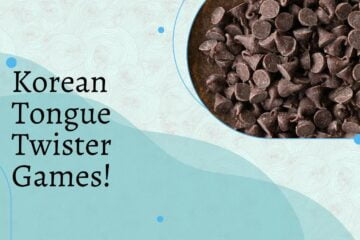Spring in Korea with its beautiful landscape brings flowers, warmer days, cherry blossoms, and many beautiful things! But there’s something to watch out for too; Korean fine dust can ruin your plans and the beautiful sky, even with warnings from officials to limit time outside. I talked a little bit about 미세 먼지, or fine dust, in my last post about Korean weather vocab and now today since we are right in the season I want to get more into it!

Where Does the Korean Fine Dust Come From?
미세 먼지 is translated literally as fine (미세) dust (먼지) but if you have heard about it before you may have seen it referred to as yellow dust or Asian dust. 미세 먼지 is brought over from the northern area of China and the dry areas of Mongolia which spread over Korea and Japan.
The fine dust is usually brought over in the spring season around March to May, when cyclones are active and bringing dust up into the air. Pollution is carried and collected along with the dust making it much worse coming over and gathering Korean pollution as well. When it is strong the sky can get tinted with a yellowish-brown color- that gives it the namesake of yellow dust.
How Often Can 미세 먼지 Appear?
Next, you’re probably wondering how common it can be, particularly the dust storms where you might have to worry if you are in or visiting Korea.
Just a few days ago on March 28 and 29th this year, there were reports of a huge dust storm blanketing across Seoul and all over South Korea. There has already been an issued warning and yellow dust advisory this past Thursday for many provinces within South Korea. When these cases come up it is recommended to limit time outdoors and wear a mask to help protect yourself if needed. So far the storm is expected to continue until Sunday, with an additional advisory that dirty/dusty rain is predicted.
Reports show that yearly dust storms can vary and while they happen in spring there isn’t a strong rhyme or reason so you just have to check 미세 먼지 levels and predictions. From what I can find it looks like the frequency of yellow dust was already on a downward trend before COVID (aka huge worldwide shutdown = less pollution) and has decreased since around 2015 which is good news!

sourced from: The National Atlas of Korea
Can Korean Fine Dust Make You Sick?
Sadly yes, extended exposure to high dust levels can have negative effects on your health. The biggest effect is on your lungs and respiratory system. Short-term effects can be coughing, asthmatic attacks, headaches, and irritation in your eyes, throat, and nose.
Depending on your time outside, if you’re wearing a mask, and the fine dust levels some people might even experience these effects after exposure for just one day. Also note! Exercise is strongly discouraged when fine dust levels are high because if you are exerting yourself you need to breathe in more thus bringing more into your system. So if you were jogging outside or biking you could find yourself more affected than someone just walking for example.
Dont forget, that certain people are also much more susceptible than others:
- Children (including teenagers) whose lungs are still developing
- People with certain conditions such as asthma and bronchitis, or even just dust allergies
- Older adults with weakened health systems and potential pre-existing conditions
What Are the Long-Term Effects?
Long-term effects have been and are still being studied heavily. As well as its connection to respiratory problems, the Korean Medical Association has found a link with cerebrovascular diseases (related to blood flow in the brain).
For people with cardiovascular diseases, another study saw the connection between high smog and dust days had an increased mortality risk. When the fine dust enters the bloodstream via the lungs it can work its way throughout the body and the smaller the particle the greater the potential toxicity.
One large resource on this I found is “The health effects of ultrafine particles” which I will link to for anyone interested in further scientific reading with over 70+ cited references about this topic. While not focused on South Korea, it covers the main issue of fine particles and pollution.

How Do You Protect Yourself From Fine Dust?
After getting into the effects (and hopefully not scaring you too much!) what can you do to protect yourself against the Korean fine dust on a bad day? Let’s run through them quickly because this is already getting pretty long:
- Limiting time outside
- Wear a mask when outside (rated masks like N95 or KF94 are best)
- Avoid strenuous exercise outside
- Showering when you return home or to your hotel/Airbnb is recommended, to remove any dust on you and keep your mucous membranes clean.
- Drink enough water! When you are dehydrated your mucous membranes are less effective thus letting particles enter more easily
- Using an air purifier at home is highly recommended, along with proper ventilation and cleaning!
And finally, many South Koreans use trackers and apps to check on the daily levels and predictions to properly plan to go outside. Two popular options are IQAir.com and MiseMise which both show detailed forecasts and advice depending on the level. The are available on both Apple and Android or just in your web browser!



2 Comments
Dax · March 31, 2024 at 5:02 pm
Super interesting post! This blog is a treasure trove. I don’t know anyone who’s putting out information like this about visiting Korea. Most people only talk about the good things (which are plenty), but it’s good to be prepared, especially if you have preexisting conditions 🤙. Also love that you linked all the useful apps and scientific research.
Pam · April 1, 2024 at 3:20 pm
Thank you! I agree it’s important to have an objective view, and this is important information for people looking to visit during spring with pre-existing conditions. I wanted to include some sources so people can better trust my research but also if they like look into it further themselves!